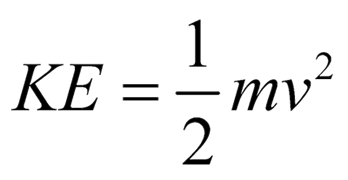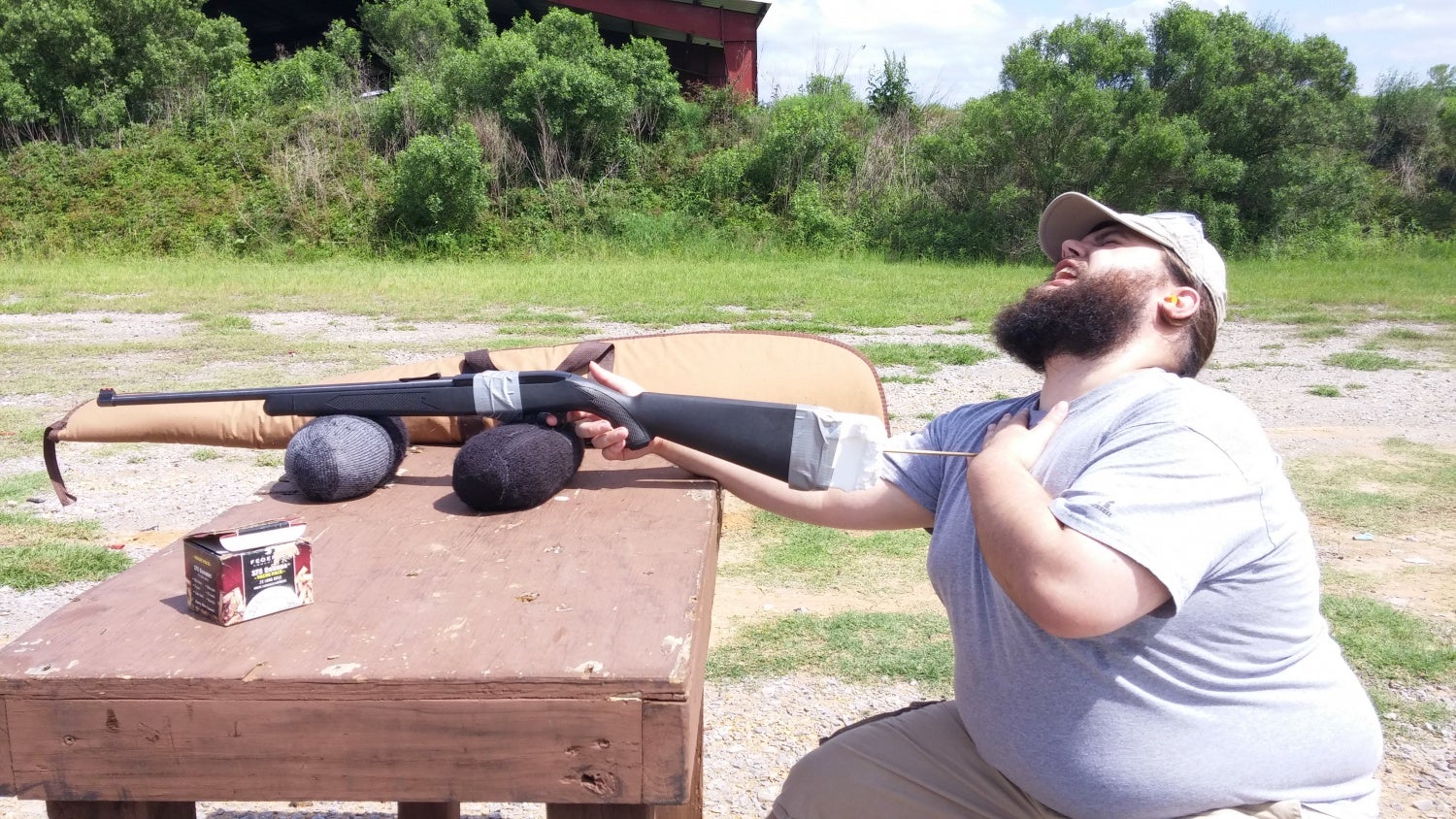In a recent post, I discussed four ballistics myths that I’ve heard over the years, and why they are just that – myths. One of these was the myth that the momentum of a projectile is equivalent or otherwise indicative of the stopping power of that projectile. I have for several years now been arguing that it is not, and the subject comes up again and again in my comments, so it’s high time I directly addressed it in a post. The short answer is “no”, as I wrote in “4 Ballistics Myths”:
4. Momentum = Stopping Power
Momentum, that is the product of mass times velocity, is a very easy-to-grasp physical quantity. A bigger man bumping into you on the street at the same walking speed will push you aside more violently than a smaller man. A larger rock or stone thrown with the same velocity will make a bigger splash in water. It’s a simple quantity that’s easily calculated and readily understood. The bigger something is, and the faster moving it is, the more oomph it has.
That’s why it’s very natural for momentum to be used as a rough metric for stopping power. This connection is made all across the gun world, from gun reviews noting that a bigger round rings steel more loudly than a smaller one, to the Taylor Knock-Out Index which combines momentum with the diameter of the bullet in an attempt to quantify stopping power against big game. However, although momentum is an important quantity in ballistics, it does not imply the degree of terminal effectiveness, or “stopping power”, that a projectile has.
Momentum is a conserved quantity, which means that as a bullet is driven forward by the force of expanding gases, the gun firing that bullet is also driven rearward with the same momentum as both the bullet and propellant gases combined. This means that the momentum produced by any bullet fired from a shoulder or hand fired weapon is not enough to significantly wound a human being, much less kill. The momentum of a bullet, when it strikes a target, does not do more than perhaps somewhat bruise the surrounding tissues and very slightly accelerate the target rearward.
This should be self-evident: Since momentum is conserved, if it were directly correlated to “stopping power”, then guns should be just as deadly to the shooter as they are to the target. Guns are not deadly to their shooters, Q.E.D., momentum is not correlated with stopping power.
Is it as simple as that, though? Several of my commenters thought that other factors might be in play, and one of the most common objections to this simple proof is that bullets have a much smaller frontal area than gunstocks do. Surely if you shot a rifle that had a buttplate surface only as wide as the bullet it fired, you’d severely injure yourself shooting it, right?
Yesterday at the range, I tested this problem to settle it for good. I took my Ruger 10/22 rifle* and modified it with a little field gunsmithing tape, a block of foam and a .22 caliber cleaning rod. The foam served as a solid base for the cleaning rod, and was taped firmly to the stock of the rifle.
*I should note that I chose this rifle not because it’s a puny .22 LR, but because it has a thick, synthetic stock that would give good purchase for the tape, and which wouldn’t be potentially damaged by it. I mostly own wood-stocked milsurps, so this was really the only rifle I own that fit the bill.
The cleaning rod was stuffed in the rear until it contacted the rifle stock, so that all forces produced by the gun’s recoil bore directly onto the .22 caliber cleaning rod. I also taped the action of the rifle shut, so that the force of recoil wouldn’t be absorbed by the rifle’s action spring. Finally, because experimentation is nothing without documentation, I filmed the whole thing:
So what happened? Well, I’ll disappoint quite a few people by saying this, but, not a whole lot. Despite getting the result I expected, even I was surprised, as I hardly even felt the cleaning rod against my shoulder during the shot. The magnitude of the effect of the rifle’s recoil was so low, in fact, that I actually feel confident that I could perform this test with much larger weapons (such as the No. 4 Lee-Enfield hiding in the brown case on the table in the video) without serious discomfort.
So this test proves to my satisfaction that momentum isn’t correlated with stopping power (such as that term is meaningful). One of the sources of confusion here, I think, is that kinetic energy – which is clearly a very important factor in terminal effectiveness – can be described as one half times momentum times velocity, but this does not mean that momentum itself, when not multiplied by those other factors, directly has an effect on the “stopping power” of a bullet. In fact, this test not only refutes that idea, but supports the idea of energy being the most relevant physical quantity, as the major physical difference between the projectile flying downrange and the cleaning rod up against my shoulder was their velocity. So the velocity seems to be the more important quantity here, although mass is not unimportant.
Hmmm, if only there were a physical quantity like momentum, but one that emphasized velocity more, maybe by, like, having it in there twice?
Though, energy by itself is not a direct indicator of terminal effectiveness, either, as I have said many times, but it – and especially its transference to the target and how it is applied in a gunshot as work – is a key ingredient to the “stopping power” recipe. Although, that is a topic for one of my Ballistics 101 posts.
To conclude, this test may be disappointing to those of my readers who expected a result more like:
but I also hope that you feel like you learned something by reading this article and watching the video. And of course, I hope this finally puts to rest the matter of momentum and its relationship to stopping power… Although that doesn’t mean I don’t still want to hear what you all think in the comments!
 Your Privacy Choices
Your Privacy Choices


